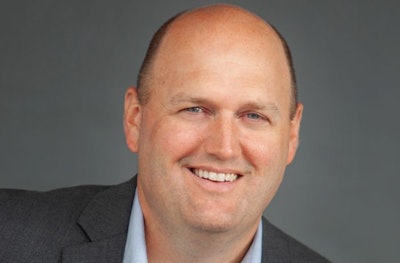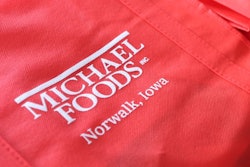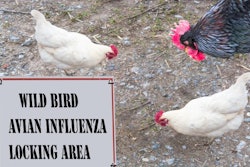
In a WATT Poultry Chat video interview, Ryan Miller, president and CEO of Farmers Hen House, spoke with Egg Industry Insight Managing Editor Deven King about the company's egg grading facility, distribution facility, coolers and offices that are 100% powered by a nine-acre solar field near the grading and distribution facility.
Farmers Hen House was approached by the Rural Electric Co-op (REC) about the opportunity. When it was built 2016, it was the largest solar field in Iowa. FHH uses the power first and any surplus energy is put on the grid for others to use. Even in the winter months, when sunshine is minimal, there is still more than enough power to run FHH and still kick out extra energy to the grid. REC manages the solar panels.
To be even more sustainable, sheep graze on the nine acres to manage the grass under the panels.
KING: Ryan, it's my understanding that you have a nine-acre solar field, can you talk about what that powers and how it impacts your ability to work with local farmers?
MILLER: Yeah, so we have a nine-acre solar field that is adjacent to our property and how that came about was in 2012, our local REC approached us about space and usage of a solar field. I don't know all the technical stuff, but they explained to me that it's best if they can have it located close to a heavy user, it's the most efficient way and then the rest of the power would go out into the grid. It took some time to get all that going.
In 2014, the first half was done (four and a half acres). That was pretty cool because our REC is the smallest in the state, but the solar field at the time was the largest solar field in Iowa. Quickly, there's been other larger ones, but so they built that part in 2014 and then came back in 2016, and put in the rest of it to fill out the nine acres. And that is quite a bit of power. Now with all nine acres, it's approximately two megawatts of power.
It feeds into our building here, our main processing and cooling storage building and a second building next to us that we own together with a local dairy. And they have more cooling in there and office space. It powers both buildings completely plus puts some extra out into the grid. We're using it for all of our stuff, some of the main components that draw a lot of power are our cooling units are a grading machine, all the motors that go with that. Not as much our lights, we've switched to mostly LED lights, so that's nice.
All our forklifts and jacks are electric, being a food plant. Something I'd like to see in the future is an electric truck for our local eight pickups, I don't think that technology is quite there yet, it's getting there. In the future I’d like see more ways to use that electric power. You know, they did a really good job with the way they engineered it (the solar field) for winter and the slope and stuff of the panel, so that snow doesn't stick to it too much. And it's just been an interesting process to see how it works.
KING: Ryan, I know you work with a lot of local farmers. Could you talk a little bit about maybe any of the solar use they use?
MILLER: Yeah, we have a few farms that use it. Most of our farms are Amish and Mennonite. The Amish farms are not connected to the grid, so we have to use solar power for part of their needs. We have one newer building that uses solar power for the whole operation, tunnel ventilation, cooling, you know, running the nest and stuff like that and that is interesting. The ones who use partial, a lot of it, it is used for lighting, running some of the smaller things and even some of our guys that do have access to the grid are using solar power for you know, part of what they do.
And one of the cool things with solar panels is, especially with chickens is you know, they can be installed. But the chickens are not going to sit on them, but we have them and because we do free-range and organic it can also be used as shade structures for the birds.
This script was edited for length and clarity.

















